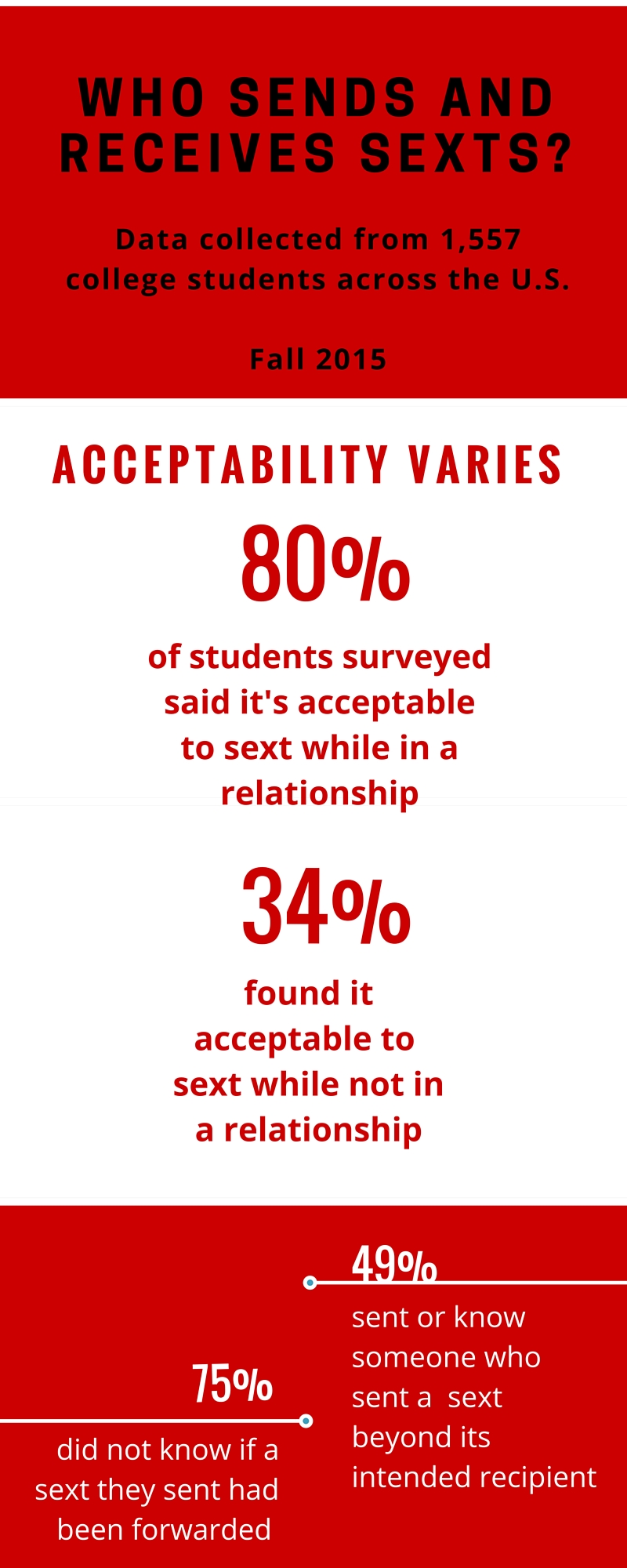
Research on sexting, politics and streaming teaches students fundamentals in strategic communication
 by Carole Johnson, university news and communications
by Carole Johnson, university news and communications
A survey done by Miami University students found that trust is the biggest fault among millennials when it comes to sexting.
Undergraduate students in a strategic communication planning course taught by Bob Batchelor surveyed 1,557 college students nationwide on sexting, analyzed results and then reported their findings — all part of a semesterlong project focusing on the study of modern communication, the media and news.
“What was surprising to us was how trusting college students are when they send their images,” Batchelor said. “They admit they do not know what happens to them and don’t believe the recipients will share them. In actuality 49 percent do forward them to others without consent.”
Although the survey is not scientific, the results provide an interesting snapshot of trends in today’s use of communication technology and provide his students the foundations for conducting research.
Junior Michael A. Rojas, strategic communications major, said this class project was different from other class projects because of the “hands-off” approach of the professor.
“This was the first time in my college career that I have seen students engage so actively with a project for class, and I believe this was due to the fact the students were in complete control,” Rojas said.
Batchelor taught three sections of this course. Each section selected its topic: sexting, cable vs. streaming, and social media in political campaigns.
In each case, the students wrote news releases reporting their findings to media outlets. It was a lesson in media communications. Batchelor worked in corporate communications for many years and joined Miami this fall as a visiting assistant professor.
“Many of today’s students don’t engage with news. They don’t know what is newsworthy or how it becomes news,” Batchelor said.
The classes varied in their approaches and their outcomes but all learned skills they will use in the job market.
The sexting survey garnered the most respondents. Findings included:
- 98 percent of respondents claimed to have sexted personally or know someone who had engaged in the practice.
- Some 49 percent of those surveyed revealed that they or someone they know had “forwarded or shared a sext beyond its intended recipient.”
- 75 percent of student respondents revealed that they had no knowledge of a sext they sent ever being forwarded.
“The survey demonstrated that there is a basic disconnect between the pervasiveness of sexting and the number forwarded without consent,” wrote the students.
Other survey results
The cable survey results didn’t surprise the students. The nationwide survey of 662 college students revealed that streaming is “overwhelmingly more popular,” than cable, but college students plan to continue to use both now and in the future.
In a third survey, which garnered more than 200 responses from college students, the Internet and social media reigned as the most prominent sources for information on the 2016 presidential candidates.
The survey found:
- 80 percent of respondents use the Internet and social media to find information about candidates, while 20 percent claimed to get info from parents (5 percent) or television (15 percent).
- 66 percent of the respondents claimed that a candidate’s personal life would “impact your decision to vote for them.”
Rojas said he learned the fundamental elements of a strategic plan, how to construct one, and the importance of good writing.
“What set this class apart from others was the fascination built out of ambiguity,” he said. “We weren't handed the answers, we had to find them, and find the right ones rather than the ones that would simply answer the question.”
